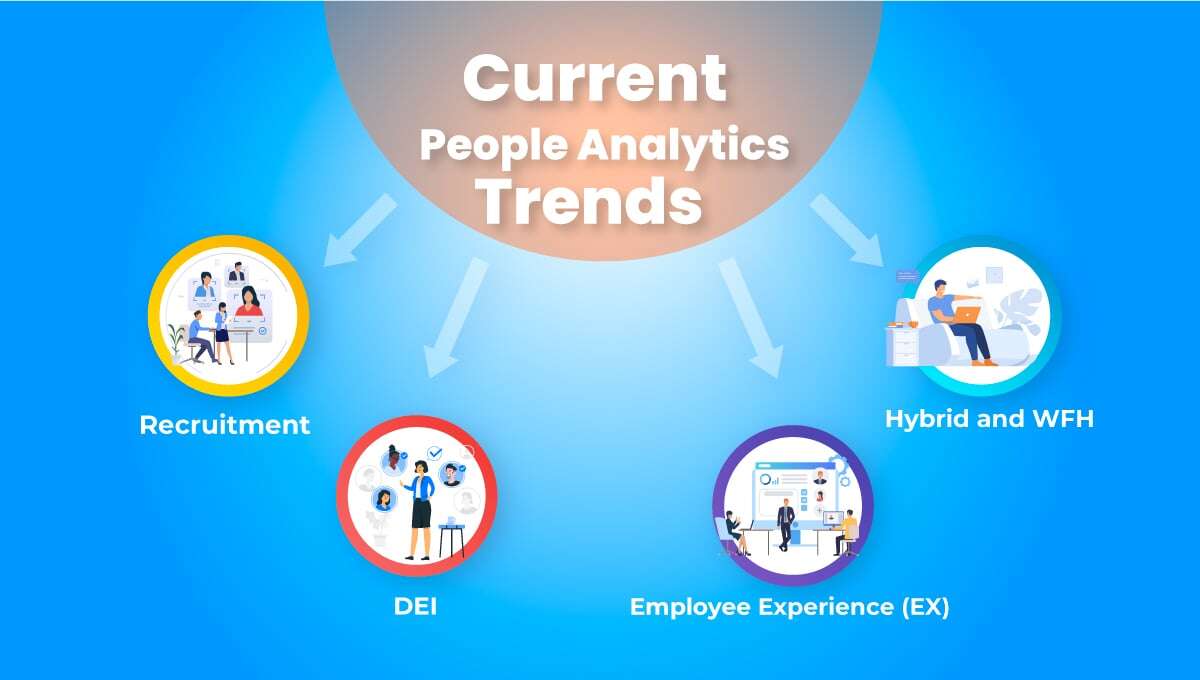
We’re well into the third quarter of 2022, and according to Bersin, it’s a “hot labor market.”
The Bureau of Labor Statistics reported that in July 2022, the unemployment rate dropped to 3.5%, representing a decline to pre-pandemic rates. This is good news.
In July 2022 alone, there were more than half a million new jobs, most of them in the leisure and hospitality sectors. This kind of growth in the labor market and the past two years’ events dictate the current trends in people analytics.
Here’s a brief look at what’s happening.
Recruitment
The job market is thriving right now, creating a sellers’ market. Under those circumstances, employee retention is more challenging because vacancies exceed applicants, and there is stiff competition for the same talent pool. Recruiters and employers have to up their game.
We’re still feeling the effects of the Great Resignation as employees reconsider what they want from their careers and employer. The number of people who left their jobs last year exceeded 40 million, while a July 2022 survey by McKinsey found that 40% of workers are considering quitting. The Great Resignation is far from over.
So employers need to put more effort into attracting and retaining their workforce. How? By streamlining the recruiting process. Here people analytics plays a crucial role in managing the hiring funnel and selecting the right people for the role and your organization. It ensures candidate alignment with the organizational culture and values, onboarding, and compensation packages.
DEI
The data shows that a diverse workforce performs better.
So DEI initiatives have been an HR priority for a few years now. Or have they? Some companies have only been paying lip service to the DEI agenda. They rushed into the trend, appointing DEI leaders without having proper systems to capture the data they need to measure and improve diversity in the workplace. The DEI executive becomes a mere figurehead.
More companies are investing in programming, holding leaders accountable for driving observable, structural change. They’re using people analytics to capture and filter demographic data by compensation, promotion, position, and seniority to make good on DEI promises and uncover areas of unconscious bias and less apparent inequities.
If you aren’t using your DEI data to make decisions, you’re doing it wrong.
Employee Experience (EX)
Employers are paying close attention to employee experience as the pandemic shone a light on the human side of human capital.
Every stage of the employee life cycle, from recruiting and onboarding to development and departure, is fair game for improvement. An offshoot is realizing the importance of aligning employee experience (EX) with company values. Any misalignment can be detected and corrected with people analytics. For example, your company may promote a healthy work-life balance, but the work culture may not support that if their workload and meetings make working extra hours inevitable. The data will shed light on the non-essential tasks that hamper performance.
This is all part of using data to understand why people are leaving their jobs, where they’re going (switching careers, exiting the workforce altogether, or going to a competitor), and how (lateral or vertical move). The insight will empower employers to take action to design an improved employee experience that retains talent and creates a workplace that is more attractive to prospective employees.
Hybrid and WFH
Many organizations have decided to shift to remote or hybrid work. Have you?
It may be in response to the savings experienced from the reduced need for office space and the resulting overhead costs or the employees’ need for more flexibility.
Yet that transition brings other ramifications that are now being studied in depth. How do the different models – office, hybrid, and remote work—affect
- productivity,
- efficiency,
- employee engagement,
- teamwork,
- innovation,
- collaboration,
- communication, and
- management?
Employers will use people analytics to make more informed decisions about which work environment is better suited to the type of work, employee, culture, and how they affect business outcomes.
It doesn’t come without its workforce management challenges. Using people analytics to manage and measure engagement levels and productivity is becoming necessary with scattered teams.
Are you on top of the work trends unfolding in your organization?
Optimize your people analytics practice so that you can use data to anticipate and respond to changes while maintaining business performance.
PhenomᵉCloud is a comprehensive technology solutions provider committed to empowering businesses to overcome challenges, enhance their workforce capabilities, and achieve superior outcome

Leave a Comment